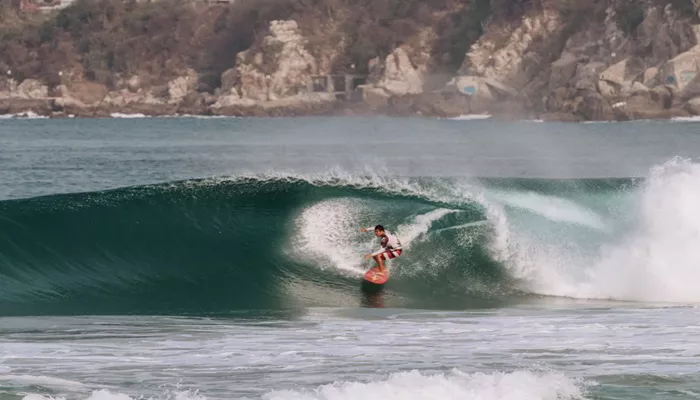Polynesia, a vast region of the Pacific Ocean encompassing over 1,000 islands, is widely regarded as one of the best surfing destinations in the world. From Tahiti’s powerful reef breaks to Samoa’s pristine waves, Polynesia offers an unrivaled surfing experience. The region’s unique combination of geological formations, consistent swells, and warm tropical waters creates the perfect environment for surfers of all skill levels. This article explores the factors that make Polynesia a surfing paradise.
Geographical Advantage
Volcanic Islands and Coral Reefs
Polynesia’s islands are primarily volcanic, with steep coastlines and deep ocean trenches that contribute to the formation of powerful waves. The presence of fringing coral reefs also enhances wave quality by shaping perfect barrels and hollow waves, making Polynesia a favorite among experienced surfers. Breaks like Teahupo’o in Tahiti are famous for their heavy, fast, and perfectly formed waves.
Expansive Pacific Ocean Exposure
Polynesia’s location in the vast Pacific Ocean gives it direct exposure to swells from multiple directions. This ensures a consistent flow of waves year-round, generated by distant storms and trade winds. Unlike enclosed seas or coastal regions with limited exposure, Polynesia benefits from uninterrupted wave energy that travels thousands of miles, leading to powerful and well-formed swells.
Ideal Wave Conditions
Consistent Swell Generation
One of Polynesia’s greatest surfing assets is its consistent swell. The Pacific Ocean, particularly in the Southern Hemisphere, is home to frequent low-pressure systems that produce long-period swells. These swells travel across the ocean and hit Polynesian islands with precision, offering waves that range from mellow rollers to challenging barrels.
Variety of Breaks
Polynesia caters to all levels of surfers due to its diverse range of surf breaks:
Reef Breaks – Known for their speed and shape, these breaks (like Teahupo’o and Cloudbreak) provide world-class waves.
Point Breaks – Found in places like Samoa and Tonga, these offer long, peeling waves perfect for maneuvers and carving.
Beach Breaks – More forgiving and beginner-friendly, these are found on islands with sandy shores and are ideal for newcomers to the sport.
Favorable Climate and Water Conditions
Warm Tropical Waters
Unlike many other top surf destinations that require wetsuits, Polynesia boasts warm, tropical waters averaging between 77-84°F (25-29°C). This allows surfers to enjoy extended sessions without the discomfort of cold temperatures.
Minimal Seasonal Variation
Polynesia experiences relatively minor seasonal changes, ensuring that surf conditions remain consistent throughout the year. The peak surf seasons vary slightly across different island chains but are generally reliable for excellent waves in both winter and summer.
Cultural and Surfing Heritage
Polynesia’s Connection to Surfing
Polynesia is often considered the birthplace of surfing. Ancient Polynesians, particularly in Hawaii, developed the first wooden surfboards and rode waves as part of their culture and spiritual traditions. This deep-rooted connection to surfing enhances the experience of riding waves in the region, as surfers can immerse themselves in the historical and cultural significance of the sport.
Local Surfing Communities
Despite being a global surfing destination, Polynesia maintains a welcoming and tight-knit surfing community. Many local surfers embrace the aloha spirit, sharing waves with visitors and fostering an environment of mutual respect in the lineup.
Accessibility and Surf Tourism
Well-Developed Surf Infrastructure
Many Polynesian islands have embraced surf tourism, offering well-established surf camps, guided surf tours, and rental shops. Locations such as Fiji, Tahiti, and Samoa have accommodations ranging from budget-friendly surf hostels to luxurious beachfront resorts tailored for surfers.
Easy Travel and Visa Policies
Polynesia is accessible to international travelers, with major airports in places like Tahiti, Fiji, and Hawaii offering direct flights from North America, Australia, and Asia. Many islands have relaxed visa policies, making it convenient for surfers to explore multiple destinations within the region.
Conclusion
Polynesia’s ideal surfing conditions stem from its unique geography, consistent swells, and deep-rooted cultural connection to the sport. The warm tropical waters, variety of surf breaks, and welcoming local communities make it a bucket-list destination for surfers worldwide. Whether chasing heavy barrels in Tahiti or enjoying mellow waves in Fiji, Polynesia offers an unparalleled surfing experience that continues to captivate wave riders of all levels.

